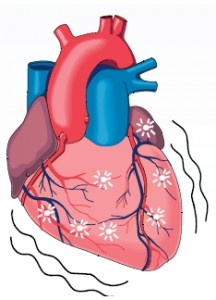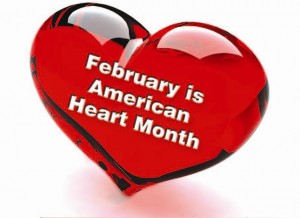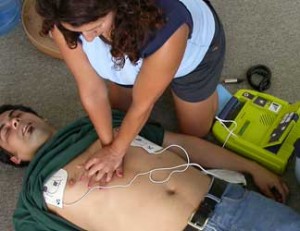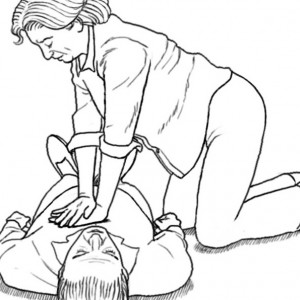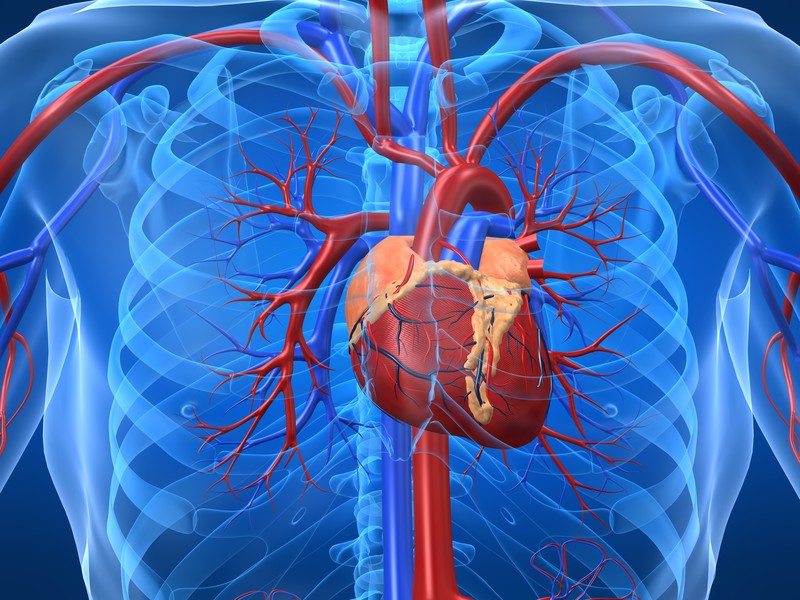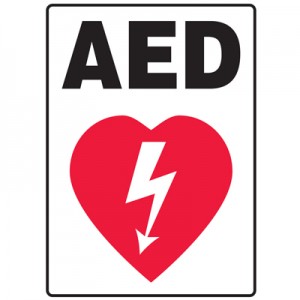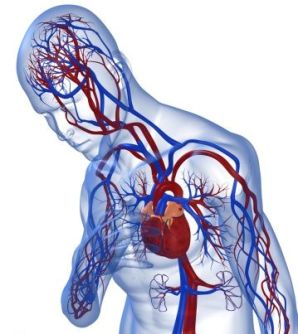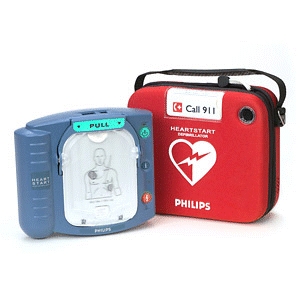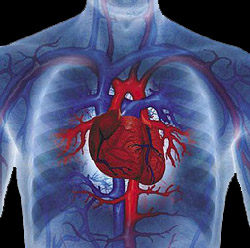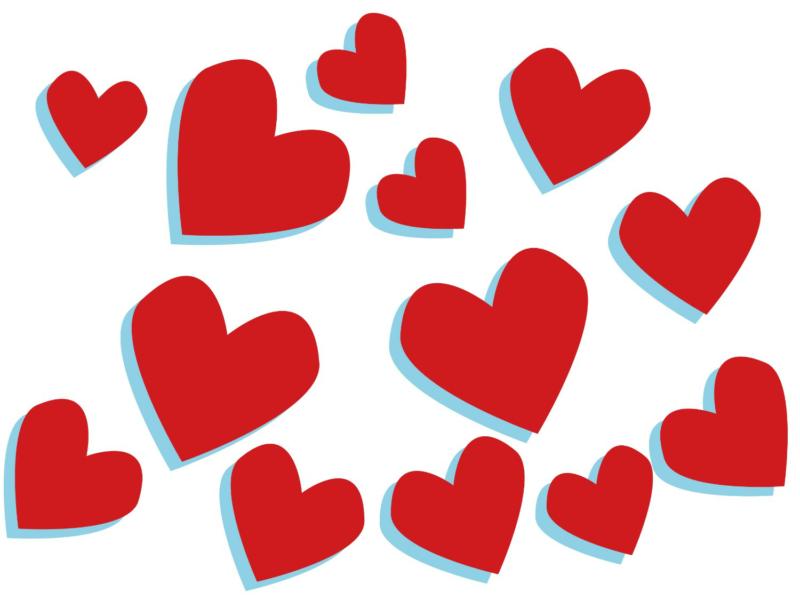Ventricular fibrillation (v-fib for short) is the most serious cardiac rhythm disturbance. The lower chambers quiver and the heart can’t pump any blood, causing cardiac arrest.
How it works
The heart’s electrical activity becomes disordered. When this happens, the heart’s lower (pumping) chambers contract in a rapid, unsynchronized way. (The ventricles “flutter” rather than beat.) The heart pumps little or no blood. Collapse and sudden cardiac arrest follows — this is a medical emergency!
Signs of cardiac arrest
- Sudden loss of responsiveness (no response to tapping on shoulders)
- No normal breathing (the victim does not take a normal breath when you tilt the head up and check for at least five seconds)
- This is sudden cardiac arrest (SCA) — which requires immediate medical help (CPR and defibrillation)!
Treatment for cardiac arrest caused by ventricular fibrillation
- Ventricular fibrillation can be stopped with a defibrillator, which gives an electrical shock to the heart. If you see someone experiencing the signs of cardiac arrest:
- Tell someone to call 9-1-1 and get an automated external defibrillator (AED) if one is available. You begin CPR immediately.
- If you are alone with an adult who has these signs of cardiac arrest, call 9-1-1 and get an AED (if one is available) before you begin CPR.
- Use an AED as soon as it arrives.
- Continue CPR until trained emergency medical help arrives.

